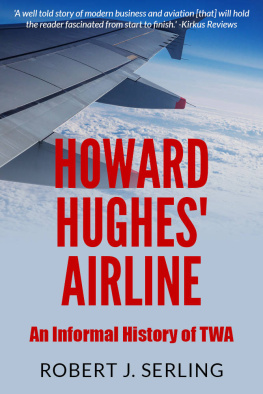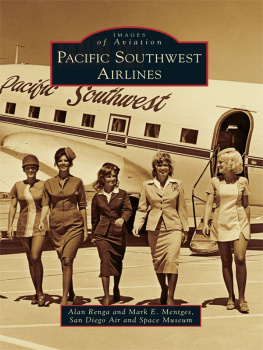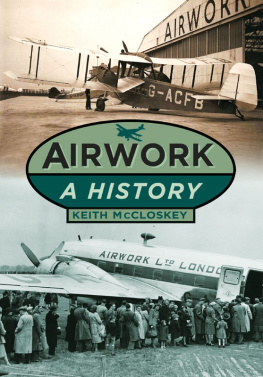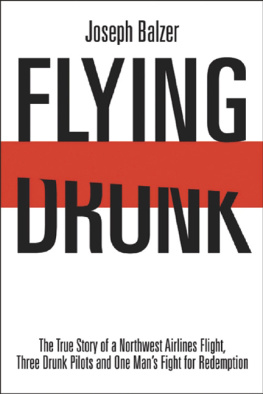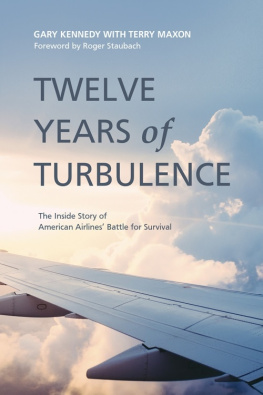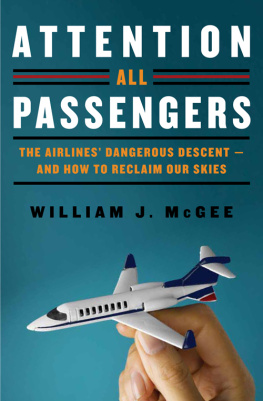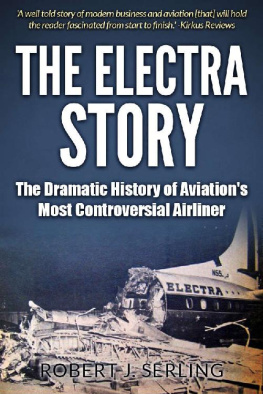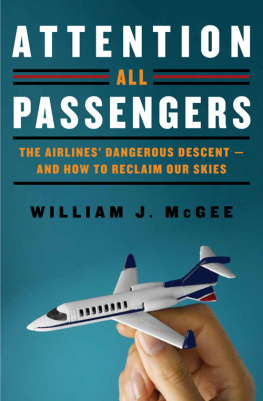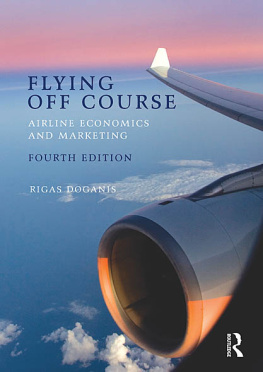EAGLE
THE STORY OF
AMERICAN AIRLINES
Robert J. Serling
Robert J. Serling 1985
Robert J. Serling has asserted his rights under the Copyright, Design and Patents Act, 1988, to be identified as the author of this work.
First published in 1985 by St. Martins Press.
This edition published in 2019 by Lume Books.
To C.R.
Because it was Cyrus Rowlett Smith who
gave American Airlines its identity
and its soul.
Table of Contents
Prologue
On a cold New York winter night early in 1931, a young airline official named Goodrich Murphy sat down to a pre-theater dinner with his wife and another couple.
The fact that they were heading for the theater was unique in itself; in 1931, airline people, even if they were in management, worked for salaries that today would stand several notches below the poverty level, and even then were roughly the equivalent of grocery clerk wages. The chief (and about the only) fringe benefit was an occasional trip passwhich Murphy, who hated to fly, seldom used.
Yet his personal dislike of flying in no way interfered with his enthusiasm for his job. He was divisional traffic manager for a recently formed airline and, like all his underpaid airline brethren, Goodrich Murphy possessed something that helped make up for skimpy paychecks: a deep pride in belonging to the exciting, challenging new world of commercial aviation.
His own company had been forged out of a sprawling, unwieldy, sadly uncoordinated conglomeration of a dozen or so smaller air carriers operating no fewer than twenty-seven different types of aircraft, over routes that on a map resembled hopelessly tangled spaghetti; its pilots didnt even wear the same standard uniform, their varied flight apparel ranging from blue serge suits to leather jackets, depending on which division they flew for and whether they were hauling mail or people.
No matter. It was an airline , albeit one with the cohesiveness of watered-down glue, desperately seeking some kind of corporate identity that would establish instant acceptance and recognition as a new transportation giant. As a matter of fact, the very subject of corporate identity came up at Goodrich Murphys dinner table that night.
Murphy had entered a company-sponsored contest for a new insignia that would go on all letterheads, ticket offices, hangars, and aircraft. The rules limited entrants to a maximum of five designs; professional designers were ineligible, and the employee whose design was chosen would get a $100 prizea small fortune to the recently married divisional traffic manager.
Deadline for submission happened to be that very midnight, but Murphy already had submitted three entries, one of which he felt had an excellent chance. In between the airlines two initials he had drawn a V-shaped wing that he proudly described to his dinner companions as his best shot at that coveted $100.
Who are the judges? someone asked.
An alarm bell clanged, for it suddenly dawned on Goodrich Murphy that he might have a problem with the three most influential members of the judging panel: the airlines president, one of its vice presidents, and a director. All of them had one thing in common: a military background. The president and vice president, in fact, were graduates of Annapolis and West Point, respectively, and the director had been an officer in World War I.
None of his entries, Murphy realized, even remotely hinted at a patriotic motif, an omission he hadnt thought of until just now. He looked at his watch and made an instant decision: he sent his protesting wife and the other couple to the theater and sat down to create a new insignia.
The American bald eagle, he figured, would have to be the focal point of the corporate symbolit connoted not only powerful flight but patriotism, a natural link between the company and the country it served. At this point he collided with a major obstacle: he wasnt much of an artist and he couldnt find a picture of an eagle in any book, even an encyclopedia. In desperation, he began thumbing through magazines without success until he came across an old issue of The New Yorker magazine. His eyes fell on an advertisement for the Gleneagles Hotel in Scotland, a layout featuring a swooping eagle.
Working on the card table that also doubled for the Murphys dining room table, he sketched his own version of an eagle from the one in the ad, depicting it in flight, talons outstretched and poised just over the upper curvature of the earth. On each side of the bird he put the airlines initials in large red letters set against a blue background. His final touch was a double red-and-white circle around the insignia.
Red, white, and bluethe national colors. The eagleanother national symbol that spoke of powerful, effortless flight. The globesignifying an air carrier that someday would be known around the world.
Tired but sensing that he had achieved a goal that was more instinctive than real, Goodrich Murphy went to his office in the Chanin Building at 122 East 42nd Street, just across from the Commodore Hotel. There he placed it in a company envelope and time-stamped it before the midnight deadline.
In due time, Murphy was notified that his entry had won over some thousand other designs and would become the official corporate logo. A tall, distinguished, and articulate man, he was to leave the company eventually and go on to important positions at the New Haven Railroad, Eastern Airlines, Matson Navigation, and the Budd Company. But the insignia he created on that card table became one of the most instantly recognized corporate symbols in history, a logo that has lasted for more than half a century, albeit with occasional modifications.
For the initials Goodrich Murphy drew on each side of the bird were A-A.
Then they stood for American Airways. Today its American Airlines, and the symbol of the proud, magnificent eagle signifies now what Murphy hoped it would fifty-four years ago. Like the great winged creature itself, the airline is a national institution, with worldwide acknowledgment of its leadership in air transportation.
But it wasnt always that way, certainly not when Murphy copied the picture from the magazine ad. American in those days was the Rodney Dangerfield of the airline industry, with a hodgepodge fleet, a route system that made no sense, and a corporate structure so tangled as to defy imagination. To paraphrase a classic description of the airplane, American quite literally was a collection of spare parts flying in abysmally loose formation.
Even its ancestry is somewhat uncertain; for the first few years of its existence, it wasnt a single airline but rather a group of small, struggling carriers so unorganized that occasionally they competed against one another. Their only link was a holding company under whose roof they cavorted like a passel of undisciplined children.
Every airline seeking the honor of chronological seniority and historical longevity likes to cite the start of some long-forgotten predecessor company as its own birthdate; United, TWA, and Western have been feuding for years over which is supposed to be Americas oldest carrier. American never got into the argument for a very good reason: its genealogical roots are as numerous as the characters in a Russian novel, with more predecessor companies than the rest of the major airlines combined. Figuratively speaking, it knows when its parents got married, but it isnt sure about its grandparentsthere were too many of them. And its own files reflect this uncertainty.
The archives trace Americans direct ancestry to Robertson Aircraft of St. Louis, a small company that in 1926 won the second air mail contract awarded to a private operator by the U.S. Post Office Department. The date of Robertsons first mail flight, from St. Louis to Chicago, was April 15, 1926, and Robertson eventually became part of American. If this is accepted as the airlines birthday by right of ancestral seniority, then the honor of becoming Americans first pilot belongs to the man who made that first flight.
Next page

